What exactly is a wildfire? Wildfires, also known as bushfires, are uncontrolled fires that burn acres of land and consume everything in their path in minutes, fueled by various weather conditions, dry underbrush, and wind. Wildfires are garnering more attention, and many people wonder what causes them. So, how exactly do wildfires start?
Background on Wildfires
Every year, tens of thousands of wildfires rage across the globe, destroying properties and killing citizens and the courageous firefighters who defend them. While some wildfires occur naturally and contribute to the health of forest ecosystems, human-caused wildfires account for 84% of all wildfires. Wildfires not only harm lives and habitats; they also hasten climate change. Climate change has resulted in more extreme weather, including droughts. The “most severe drought in recorded history” is currently affecting most of the United States, and the hotter and drier the environment grows due to rising temperatures, the greater the chance of wildfires sparked by natural or human-caused activity.
Unfortunately, many of these terrible fires might have been avoided and are predominantly the consequence of human negligence. As a result, it is essentially the responsibility of all residents to do their part in acting more responsibly to reduce the vast number of wildfires that occur each year. Below, we’ll go through the eight wildfire triggers and how you may avoid them.
The 8 Most Common Wildfire Triggers and How They Start
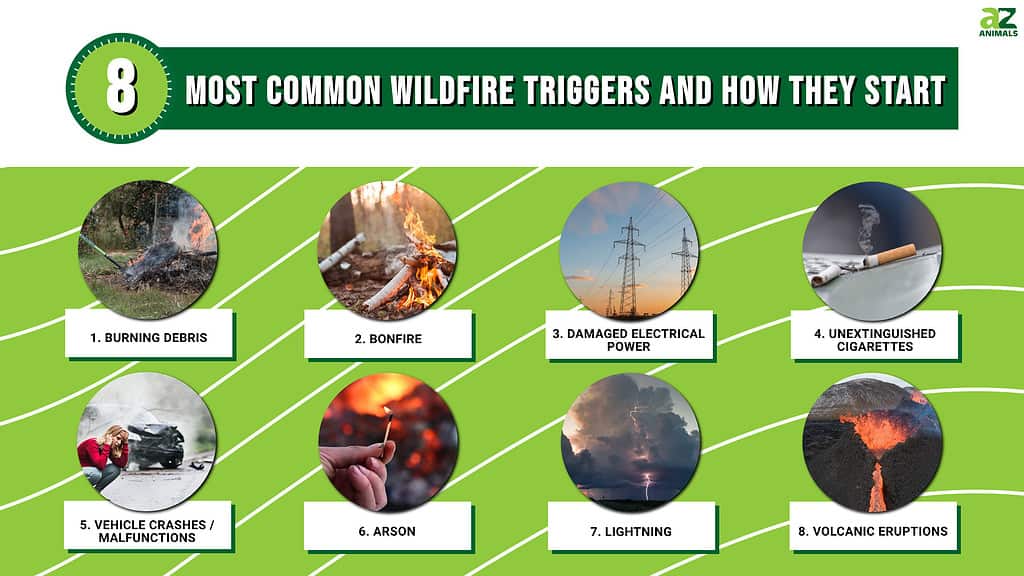
Wildfires Caused by Nature
8. Eruption of Volcanoes
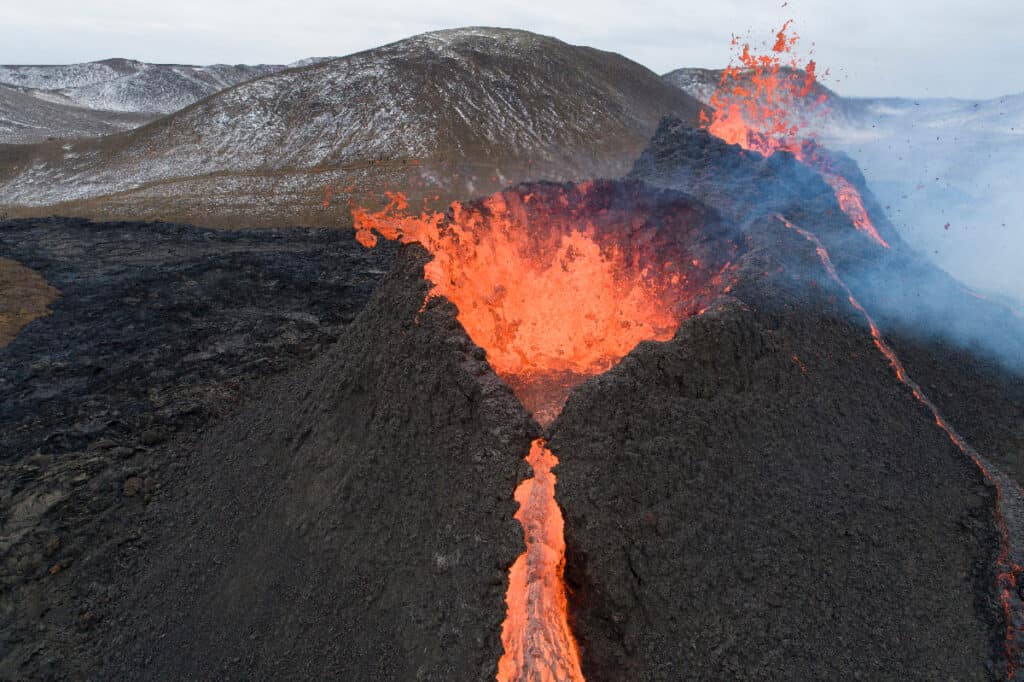
The extreme heat of lava may cause vegetation to catch fire and spread, resulting in a wildfire.
©Cavan-Images/Shutterstock.com
Wildfires can start from hot, burning lava from volcanic eruptions. Lava is a term used to describe the hot liquid rock that flows from a volcano. Naturally, a vast forest might surround an active volcano. The extreme heat of lava may cause vegetation to catch fire and spread, resulting in a wildfire. Because the lava from the eruption has such a high temperature, it burns everything in its path, and the fuel does not need to be very flammable. Mitigating a volcanic eruption is possible by evacuating the human population from the affected area.
Volcanic eruptions have indirect consequences, and wildfire is just one of the many. Mudflows are prevalent secondary consequences of eruptions at other volcanoes, although they can also be direct. High-flying jetliners can be brought down by volcanic ash if they travel into almost imperceptible ash concentrations. Massive eruptions can result in crop failures and short-term weather changes on a larger scale. Beyond the area covered by lava or ash, one can cause substantial problems. Because the Earth is such a complicated system, even modest natural perturbations can have unintended consequences.
7. Lightning
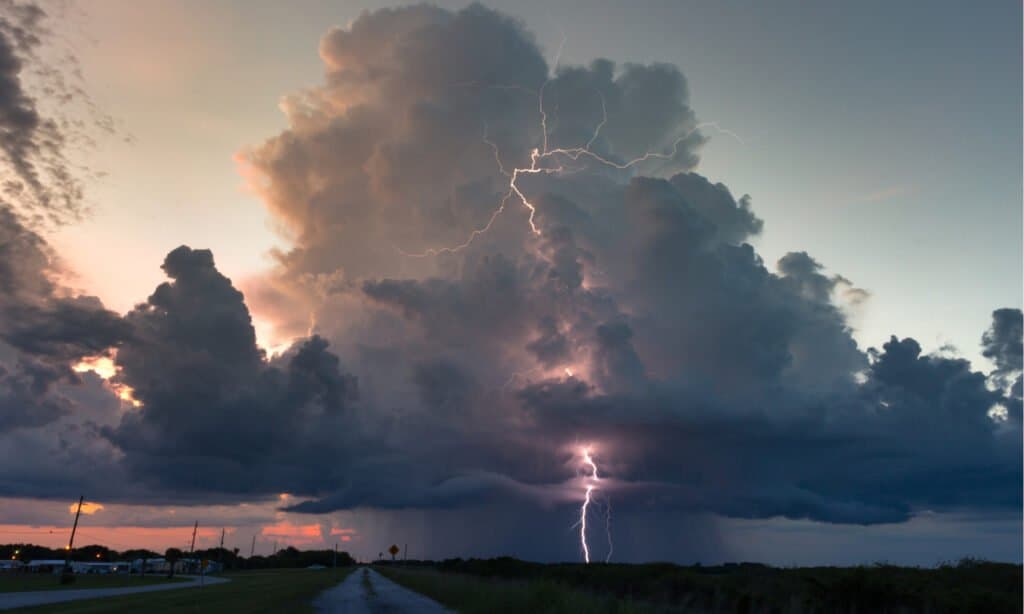
When lightning bolts continue for an abnormally long time, wildfires may result from that.
©Jeff Gammons StormVisuals/Shutterstock.com
Lightning has two components: leaders and strokes. The cloud’s probing feeler serves as the leader. The actual lightning bolt or flash that we witness is a succession of strokes called “return streaks of light.”
Cold lightning and hot lightning are the two forms of lightning. A return stroke with a powerful electrical current but a short duration is known as “cold lightning.” Hot lightning has lower voltage currents that last for extended periods. In some instances, wildfires can start as a result of lightning. It frequently happens when lightning bolts continue for an abnormally long time or when they strike a dry material. Unfortunately, wildfires of this nature are unavoidable.
When lives and properties are at risk, every effort is made to put out the fire. A natural fire may be allowed to burn its course in some places, such as big national parks and forests if the lightning-caused wildfire benefits the ecology. Natural barriers may limit a fire to a specific location in certain instances.
Wildfires Caused by Humans
6. Arson
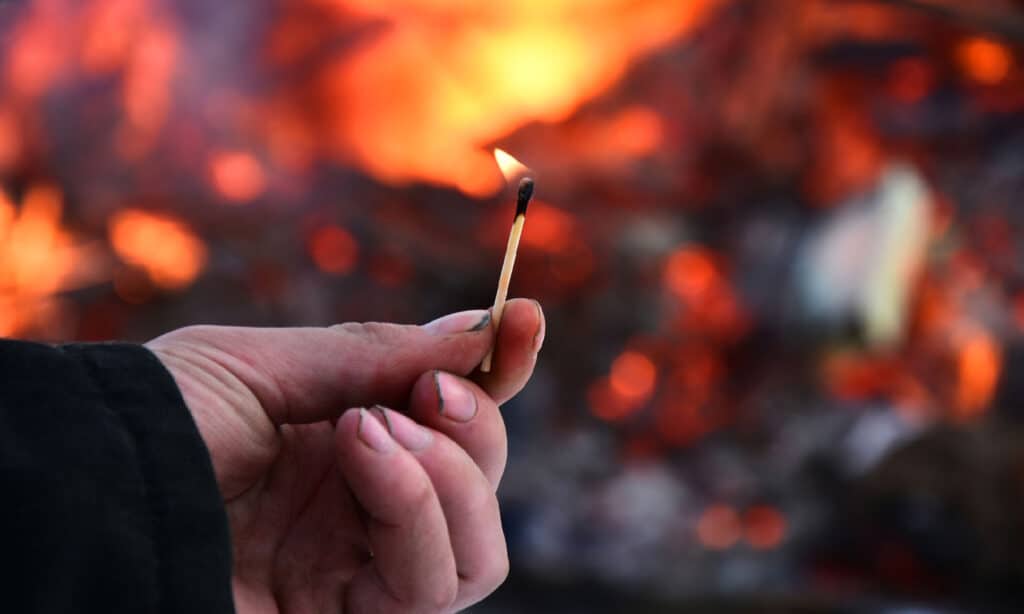
Many wildfires are started by deliberating setting fire to property.
©iStock.com/PamWalker68
Unfortunately, many wildfires are started deliberately due to irresponsible behavior rather than naturally. Arson is the intentional or malicious setting of fire to property, especially public lands, intending to cause harm or defraud. Arson fires may account for more than 20% of all human-caused wildland fires and, in some jurisdictions, up to 70% or more. The exact number is unknown because arson fires may not be recognized for some time and may be classified as another cause, undetermined, or unknown until a pattern emerges.
Arson is a felony resulting in a year or more in prison and a fine. A person found guilty of arson may be held liable for all costs involved with the wildfire’s suppression, land rehabilitation, and property destruction. If you feel an arson attack has happened, call the police. There will be fewer wildfires if authorities can find and prosecute an arsonist as soon as possible.
5. Vehicle Crashes/Malfunctions
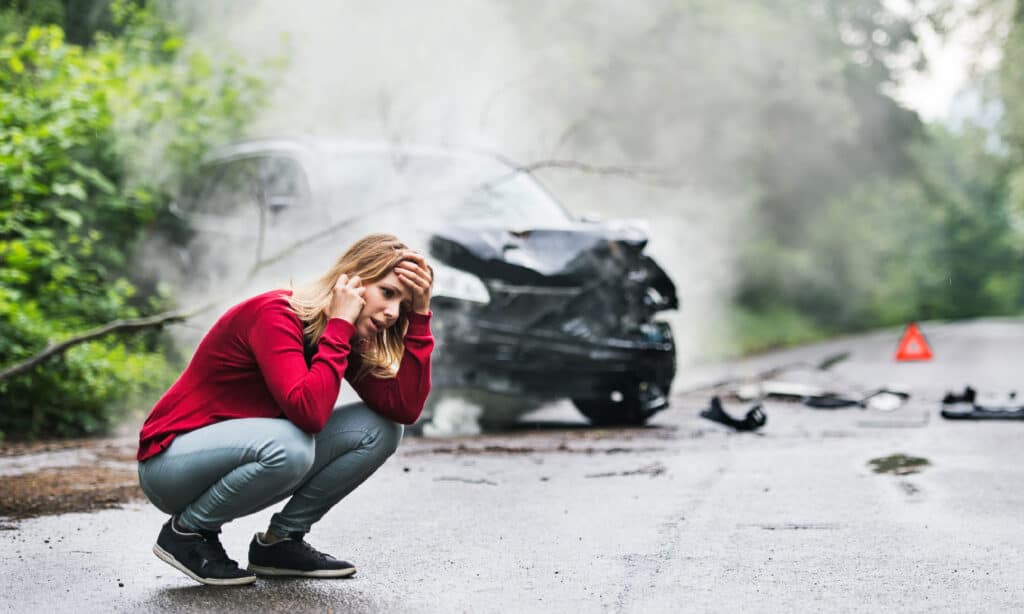
Wildfires can start from vehicle collisions and failures.
©iStock.com/Halfpoint
A surprising number of wildfires can start from vehicle collisions and failures. Additionally, automobiles have numerous potential ignition sources, and vehicles can cause fires in various ways. They could, for example, have an antiquated exhaust system that produces carbon buildup or inadequately greased bearings. When something goes wrong with a running engine, scorching sparks can fly. Car accidents are also known to cause fires quickly – the reason firefighters often rush to the area in anticipation of a fire. If the vehicle operates in a field or a forest, small engine sparks can quickly turn into large fires. Another possibility is that an automobile collision occurs, which can result in a fire. In any case, staying safe and avoiding wildfires require appropriate car maintenance and full attention to the road.
4. Unextinguished Cigarettes
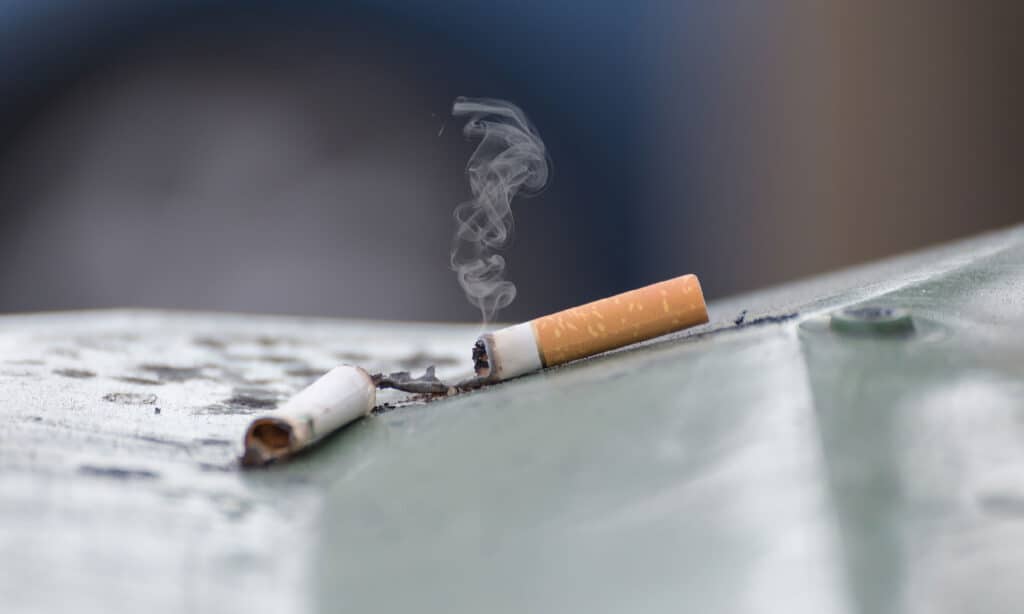
A lit cigarette thrown onto the ground could ignite dry plants and cause a massive wildfire.
©iStock.com/VichienPetchmai
Another common source of wildfires is cigarettes, and lit cigarettes also contribute to numerous wildfires each year. Unfortunately, many people are careless when throwing away their cigarettes. While throwing a cigarette on the ground is already terrible for the environment, if the cigarette is still burning, it becomes significantly more harmful than a small piece of litter. A lit cigarette thrown out a car window or onto the ground could ignite dry plants and cause a massive wildfire. Smokers must realize that even minor mistakes can harm the environment and its surroundings. They should not dump their cigarette butts on the ground and ensure that they are completely out before disposing them in an approved container. People should be careful while using and disposing of fireworks and cigarette butts, as even minor heat sources can ignite dry vegetation and cause devastating wildfires.
3. Damaged Electrical Power
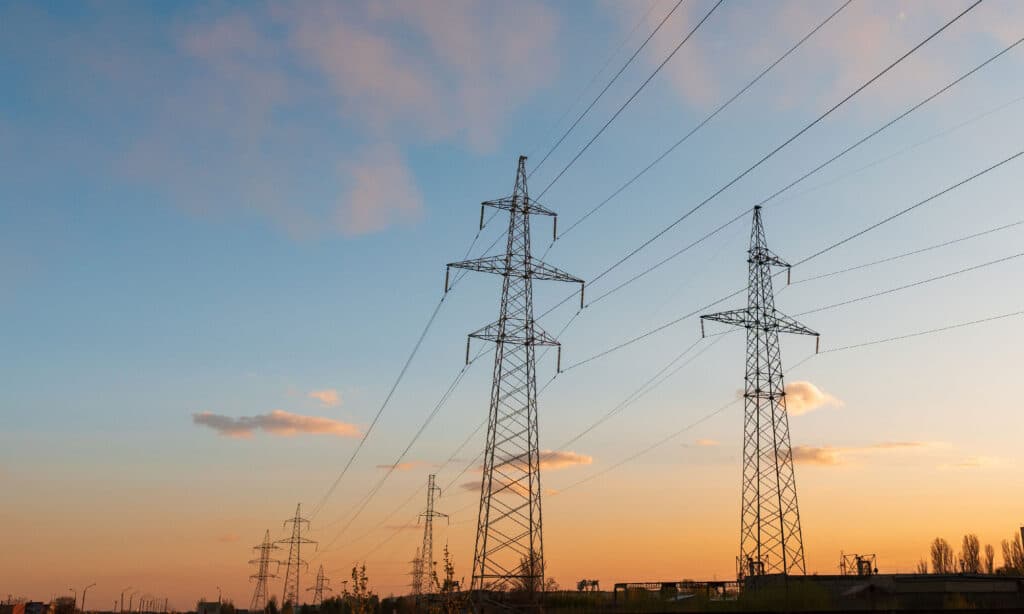
Electrical power generation, transmission, and distribution can all cause wildfires.
©yerv/Shutterstock.com
Power lines are the most prevalent cause of power generation wildfires. Electrical power generation, transmission, and distribution can all cause wildfires. Fallen power lines are one of the leading causes of wildfires in California alone, accounting for the third most prevalent cause. Sparks can ignite a branch falling from a tree and strike a power line. Wildfires triggered by electricity lines are commonly caused by high winds, contact with vegetation, equipment failure, or human or animal interaction with a power line (conductor wire).
Birds and small animals are known to start wildfires when they come into contact with high-voltage power lines. They can be electrocuted, causing the electricity line to arc and spark, or they can catch fire and ignite dry vegetation below. A combination of these factors, such as wind bringing plants into touch with electrical equipment, might cause a fire.
2. Irresponsible Campers
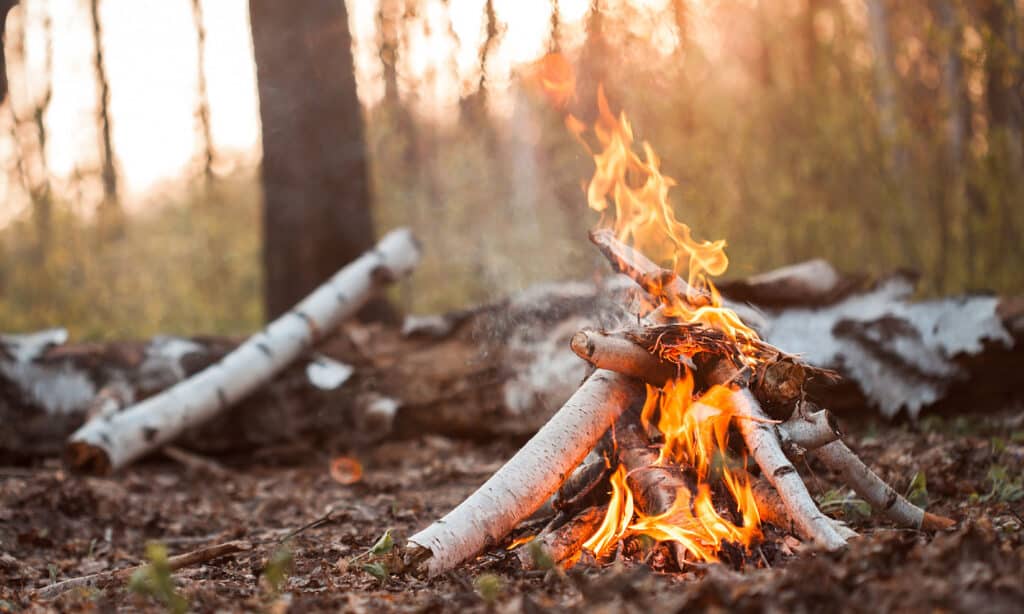
Campfires can become full-fledged wildfires.
©iStock.com/Dmytro Aslanian
Unattended campfires are another common cause of wildfires. Some of the most typical ways that campfires become full-fledged wildfires are when:
- The campfire is left unattended: Keep a close eye on the flame when starting a campfire. If an ember catches on something nearby, you can stomp it out fast. Leaving the campfire unattended to will likely expand, spread, and become out of control.
- The campfire gets out of hand: In some situations, people may create a campfire that quickly grows out of hand. Always prepare appropriately by arming yourself with a technique to extinguish the blaze or slow down its growth to prevent a simple campfire from getting out of hand. If a campfire becomes too huge, those who ignite it should carry a fire extinguisher or a large pot of water nearby.
- Campfires are not totally extinguished: It is another critical cause of wildfires. People commonly mistakenly believe they have put out a fire and leave it unattended to. However, if the coals are still hot, they may relight the fire. Make sure the fire isn’t still burning or smoldering and that the coals are safe to touch.
1. Burning Debris
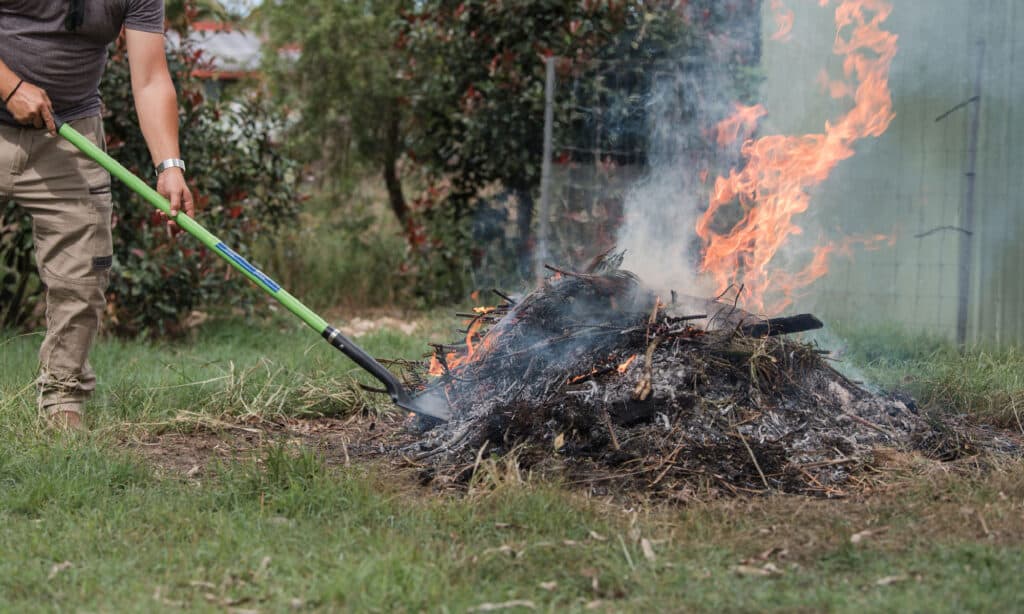
Debris burn escapes are one of the most common causes of wildland fires.
©iStock.com/Tabatha Del Fabbro Lead Images
Improperly regulated or extinguished burn barrels, piles, and escaped open flames can produce this ignition. Debris burn escapes are one of the most common causes of wildland fires. Wind can readily carry away stray embers while a person is burning enormous mounds of waste. These embers might float for miles before completely extinguishing. A wildfire might soon erupt if they come upon dry plants or other flammable items on their journey. As a result, extra caution is a must when burning debris.
Always make sure that burning debris is legal in your area before starting this type of fire. Remember that in many places of countries prone to wildfires, burning trash is prohibited at certain times of the year. Even if debris burning is allowed in your location, a burn permit may be required.
Summary of The 8 Most Common Wildfire Triggers and How They Start
| Number | Wildfire Trigger |
|---|---|
| 1 | Burning Debris |
| 2 | Bonfire |
| 3 | Damaged Electrical Power |
| 4 | Unextinguished Cigarettes |
| 5 | Vehicle Crashes / Malfunctions |
| 6 | Arson |
| 7 | Lightning |
| 8 | Volcanic Eruptions |
The photo featured at the top of this post is © iStock.com/Dimple Bhati
Thank you for reading! Have some feedback for us? Contact the AZ Animals editorial team.







